Related Research Articles

New Amsterdam was a 17th-century Dutch settlement established at the southern tip of Manhattan Island that served as the seat of the colonial government in New Netherland. The initial trading factory gave rise to the settlement around Fort Amsterdam. The fort was situated on the strategic southern tip of the island of Manhattan and was meant to defend the fur trade operations of the Dutch West India Company in the North River. In 1624, it became a provincial extension of the Dutch Republic and was designated as the capital of the province in 1625. New Amsterdam became a city when it received municipal rights on February 2, 1653.
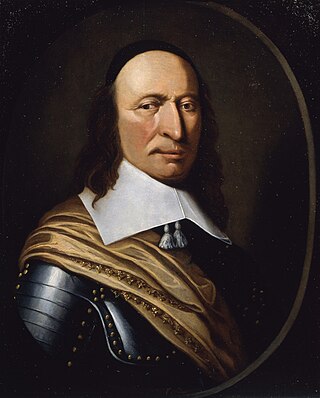
Peter Stuyvesant was a Dutch colonial officer who served as the last Dutch director-general of the colony of New Netherland from 1647 until it was ceded provisionally to the English in 1664, after which it was split into New York and New Jersey with lesser territory becoming parts of other colonies, and later, states. He was a major figure in the early history of New York City and his name has been given to various landmarks and points of interest throughout the city.

New Netherland was a 17th-century colonial province of the Dutch Republic located on the east coast of what is now the United States of America. The claimed territories extended from the Delmarva Peninsula to Cape Cod. Settlements were established in what became the states of New York, New Jersey, Delaware, and Connecticut, with small outposts in Pennsylvania and Rhode Island.

Peter Minuit was a Walloon merchant from Wesel, in present-day northwestern Germany. He was the 3rd Director of the Dutch North American colony of New Netherland from 1626 until 1631, and 3rd Governor of New Netherland. He founded the Swedish colony of New Sweden on the Delaware Peninsula in 1638.
This is a list of Directors, appointed by the Dutch West India Company, of the 17th century Dutch province of New Netherland in North America. Only the last, Peter Stuyvesant, held the title of Director General. As the colony grew, citizens advisory boards – known as the Twelve Men, Eight Men, and Nine Men – exerted more influence on the director and thus affairs of province.

Dutch Americans are Americans of Dutch and Flemish descent whose ancestors came from the Low Countries in the distant past, or from the Netherlands as from 1830 when the Flemish became independent from the United Kingdom of the Netherlands by creating the Kingdom of Belgium. Dutch settlement in the Americas started in 1613 with New Amsterdam, which was exchanged with the English for Suriname at the Treaty of Breda (1667) and renamed New York City. The English split the Dutch colony of New Netherland into two pieces and named them New York and New Jersey. Further waves of immigration occurred in the 19th and 20th centuries.
The New Netherland Institute is a non-profit organization created to support the translation and publication of 17th-century Dutch documents from the period of the Dutch colonization of New Netherland.

Kieft's War (1643–1645), also known as the Wappinger War, was a conflict between the colonial province of New Netherland and the Wappinger and Lenape Indians in what is now New York and New Jersey. It is named for Director-General of New Netherland Willem Kieft, who had ordered an attack without the approval of his advisory council and against the wishes of the colonists. Dutch colonists attacked Lenape camps and massacred the inhabitants, which encouraged unification among the regional Algonquian tribes against the Dutch and precipitated waves of attacks on both sides. This was one of the earliest conflicts between settlers and Indians in the region. The Dutch West India Company was displeased with Kieft and recalled him, but he died in a shipwreck while returning to the Netherlands; Peter Stuyvesant succeeded him in New Netherland. Numerous Dutch settlers returned to the Netherlands because of the continuing threat from the Algonquians, and growth slowed in the colony.

Pavonia was the first European settlement on the west bank of the North River that was part of the seventeenth-century province of New Netherland in what would become the present Hudson County, New Jersey.

Dirck Ten Broeck was an American lawyer and politician. The first name is sometimes given as Derick.
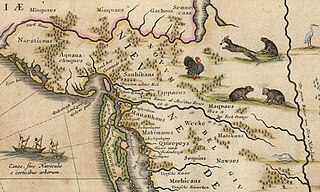
Bergen was a part of the 17th century province of New Netherland, in the area in northeastern New Jersey along the Hudson and Hackensack Rivers that would become contemporary Hudson and Bergen Counties. Though it only officially existed as an independent municipality from 1661, with the founding of a village at Bergen Square, Bergen began as a factory at Communipaw circa 1615 and was first settled in 1630 as Pavonia. These early settlements were along the banks of the North River across from New Amsterdam, under whose jurisdiction they fell.
New Netherland was the 17th century colonial province of the Republic of the Seven United Netherlands on the northeastern coast of North America. The claimed territory was the land from the Delmarva Peninsula to southern Cape Cod. The settled areas are now part of the Mid-Atlantic states of New York, New Jersey, and Delaware, with small outposts in Connecticut and Pennsylvania. Its capital of New Amsterdam was located at the southern tip of the island of Manhattan on the Upper New York Bay.

Johannes Megapolensis (1603–1670) was a dominie (pastor) of the Dutch Reformed Church in the Dutch colony of New Netherland, beginning in 1642. Serving for several years at Fort Orange on the upper Hudson River, he is credited with being the first Protestant missionary to the Indians in North America. He later served as a minister in Fort Amsterdam on Manhattan Island, staying through the takeover by the English in 1664.
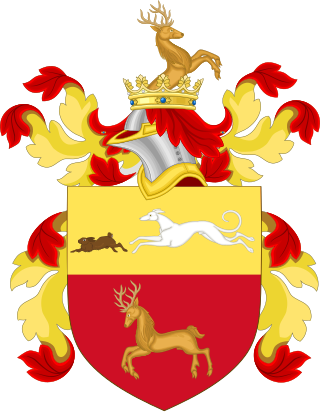
The Stuyvesant family is a family of American politicians and landowners in New York City. The family is of Dutch origin and is descended from Peter Stuyvesant (1610–1672), who was born in Peperga, Friesland, Netherlands and served as the last Dutch Director-General of New Netherland.

Peter Gerard Stuyvesant was an American landowner, philanthropist and descendant of Peter Stuyvesant who was prominent in New York society in the 1600s.
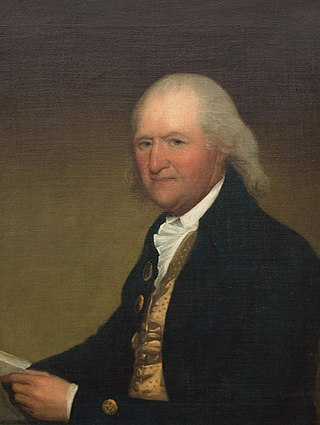
Petrus "Peter" Stuyvesant was a New York landowner and merchant who was a great-grandson of his namesake, Peter Stuyvesant, the last Dutch Director-General of New Amsterdam.

Nicholas William Stuyvesant was a New York landowner and merchant who was a great-great-grandson of Peter Stuyvesant, the last Dutch Director-General of New Amsterdam.
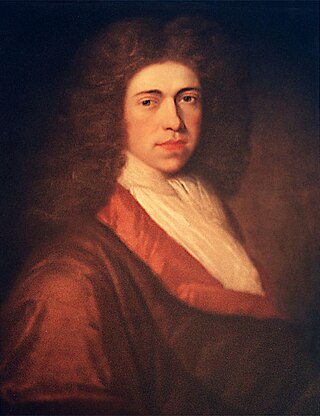
Col. Hendrick "Henry" Beekman JP, was a colonial American judge and politician.

Stuyvesant Farm, also known as the Great Bowery, was the estate of Peter Stuyvesant, the last Dutch director-general of the colony of New Netherland, as well as his predecessors and later his familial descendants. The land was at first designated Bowery No. 1, the largest and northernmost of six initial estates of the Dutch West India Company north of New Amsterdam, used as the official residence and economic support for Willem Verhulst and all subsequent directors of the colony.
References
- ↑ Valazquez, M; Holbrook, VV (1907). First Record Book of the Society of the Daughters of Holland Dames, Descendants of the Ancient and Honorable Families of the State of New York. Grafton Press, NY.
- ↑ Scheltema, Gajus; Westerhuijs, Heleen (2013-07-24). Exploring Historic Dutch New York: New York City * Hudson Valley * New Jersey * Delaware. Courier Corporation. ISBN 9780486301259.
- ↑ Gardner, Ralph Jr. (20 October 2015). "Make Way for Those Holland Dames". Wall Street Journal– via www.wsj.com.
- ↑ "2015 Annual Report" (PDF). www.newnetherlandinstitute.org. March 2016. Archived (PDF) from the original on January 5, 2018. Retrieved 12 May 2023.
- ↑ Park, Mary Woodfill and Devine, Eugenie Hoffmeyer, eds. Society of Daughters of Holland Dames. Historical Records 1895-2017. Baltimore: Otter Bay Books, 2018
- ↑ "With a Bit of Bon Ami and a Lot of Care, the Half Moon Sails Back into View". 10 November 2011.
- ↑ Park, Mary; Kimmelman, Elbrun (2013). "Early Dutch New York History Preserved the Society of Daughters of Holland Dames, Social Register Observer" (PDF) (Winter ed.).
- ↑ "Dutch Remember Stuyvesant in 'Year of the Hudson'". thevillager.com.
- ↑ "The Stuyvesant Pear Tree: New York City Mourns the Loss of Its "Oldest Living Thing" - New-York Historical Society". 22 February 2017.
- ↑ "Peter Stuyvesant, Now Glowing but Still Glowering". 16 November 2012.